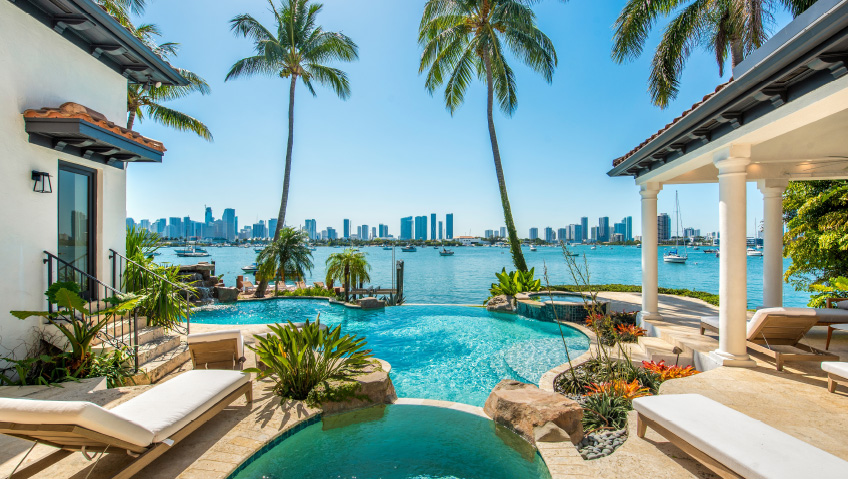Considered to be among a community’s most prized natural features, coastal areas are also particularly vulnerable to climate change impacts including erosion, storm surges, and rising sea levels. Human lives, housing, natural heritage, and local livelihoods are all at risk, making coastal resilience a top priority to improve a community’s capacity to endure and quickly recover from weather catastrophes.
Actively identifying, organizing, and employing coastal adaptation techniques helps safeguard communities while informing and guiding infrastructure investment plans, reducing development uncertainty, and creating long-term economic viability.
The ability of a building to endure severe weather and mitigate risks is measured by its resilience, which entails evaluating the risks associated with emergencies, long-term climate change, and natural disasters, says The Constructor. Evaluating the risks associated with possible extreme weather events and other dangers is a key component of resilience, and developers and architects can reduce the economic, social, and environmental losses brought on by catastrophic events by planning resilient buildings that anticipate how people and buildings will react, recover, and adapt.
Adaptation is a crucial component of creating durable structures for harsh weather, with stricter rules being added to building codes to guarantee structural soundness. Building designs in areas with a history of erratic weather events need to be extremely flexible to handle sudden and swift weather changes, with features that enable the building to be reconfigured in response to climatic change. Buying better-quality building supplies than what the code calls for is a proactive step that guarantees a structure is made of materials that are less likely to be negatively impacted by strong winds, flooding, or other severe weather events.
Stricter testing requirements to replicate extreme weather events are already a part of many building standards, adds The Constructor, making it possible to verify that building materials have been tested in relation to a region’s expected weather.
To fight climate change and create resilient buildings, Texas county governments and school districts are being urged to think about decarbonizing their buildings. Recent weather events around the state, including Winter Storm Uri and Hurricane Beryl, have clearly shown the damaging effects of climate change, whether social, economic, or environmental.
According to a Texas Climate Jobs Project assessment, up to 40 percent of global carbon emissions come from existing structures, and minor adjustments like adding solar panels, replacing windows and doors, and improving insulation can increase a building’s efficiency and reduce emissions. Additionally, the interdisciplinary research teams of Planet Texas 2050—comprising architects, archaeologists, city planners, public health specialists, geologists, engineers, biologists, computer scientists, artists, and numerous community-based partners—are currently engaged in an eight-year sprint to develop solutions that will strengthen, fortify, and better prepare local communities for present and future challenges.
Despite being the most dangerous, coastal cities are home to 11 percent of the world’s population, are the hub of the majority of global economic activity, have vital infrastructure, and are popular tourist destinations, according to Arch Daily. In order to manage coastal hazards and increase resilience, the IPCC (Intergovernmental Panel on Climate Change) has offered a number of suggested interventions, including a combination of institutional, nature-based, infrastructural, and sociocultural measures to mitigate the various dangers, including vulnerability reduction strategies, avoidance, hard and soft protection, integrated multi-level coastal zone governance, proactive planning, and facilitating behavioural change.
Governments and non-governmental organizations have already implemented numerous measures to save coastal towns as the climate deteriorates. By integrating rivers, canals, parks, and woods to form a natural infrastructure, the “Sponge City” strategy—where the ground absorbs the extra water like a sponge and uses it to cultivate the land rather than creating a rainwater channel with concrete that diverts the water to another location—looks beyond large-scale engineering solutions like building banks and flood walls and instead leverages nature itself.
Governments are also choosing to utilize a Blue Urban Agenda, which emphasizes how flooding extends beyond the shoreline and acknowledges the duality and ongoing interchange between land and sea.
A long-term outlook and an openness to change are necessary when making plans for inevitable sea level rise, says HoGo Next. For instance, in locations susceptible to flooding and sea level rise, imposing setback zones or development limitations is vital, as seen in many Florida coastal municipalities, to restrict building in flood-prone areas, along with raising infrastructure and structures above anticipated flood levels.
In order to prepare for future storms, New York City is putting flood-proofing measures in place for vital infrastructure such as power plants and subway stations, while Philadelphia is using green infrastructure techniques like rain gardens, green roofs, and permeable pavements to reduce flooding, enhance water quality, and control stormwater runoff in low-lying areas.
In California, the Coastal Conservancy is reducing susceptibility to the effects of climate change through sustainable land use practices, preserving natural habitats such as woods, dunes, and wetlands to protect open spaces that serve as natural barriers against erosion and storms. Portland, Oregon encourages compact, mixed-use development to minimize the impact on natural resources and prevent sprawl, giving public transportation and infill construction top priority.
In Canada, steps are being taken to create resilience moving forward, says the Canadian Climate Institute. By 2030, an estimated 5.8 million homes—a 35 percent increase in Canada’s current housing stock—will need to be constructed in order to satisfy housing affordability targets. Governments have an opportunity to significantly reduce the risk of flooding and wildfires and contribute to affordability by implementing policy reforms that direct a portion of new dwellings to safer ground. Canada’s flood risk to new dwellings could be significantly reduced—by nearly 80 percent—if roughly 3 percent of the residences planned for construction by 2030 were redirected to safer ground and away from high flood danger locations.
The nation can thus better satisfy its housing demands while ensuring public safety in the face of climate change, as demonstrated in the Institute’s report, Close to Home: How to build more housing in a changing climate, the first study of its type in Canada to measure the financial risks associated with constructing new homes near potential floods and wildfires. The paper offers suggestions for constructing new homes outside of the most hazardous areas, which would help protect Canadians from disruptive events and save the country billions of dollars.
By 2030, annual flood losses could rise by $330 million in the best-case scenario and up to $2 billion in the worst-case scenario, says the Institute. The majority of Canada’s new financial losses from floods and wildfires occur in British Columbia, which has the potential to construct a substantial number of new dwellings in high-hazard areas.
The greatest number of new homes will be built in Ontario, including in high-risk areas. Nonetheless, Ontario’s strict laws have lowered the risk of flooding for many years and will continue to keep damages per property among the lowest in the nation, and building on this foundation further could reduce risk in the future. One of the four provinces where the biggest increases in total flood damages are predicted to occur is Quebec, where damages could reach $210 million annually. With laws for coastal and riverine flooding as well as steps to limit disaster aid for new construction in regions vulnerable to hazards, the province has also made strides in mitigating risks.
As climate change continues to escalate and affect all areas of life, including housing, a diversified strategy that tackles the interrelated issues of social justice and environmental degradation is needed to build resilient and sustainable coastal communities. Preserving natural ecosystems, preparing for sea level rise, bolstering infrastructure, encouraging sustainable land use, diversifying the economy, fostering community resilience, and funding research and innovation are all part of this. In the end, cooperation between governments, corporations, communities, and individuals is essential to the success of these initiatives.






